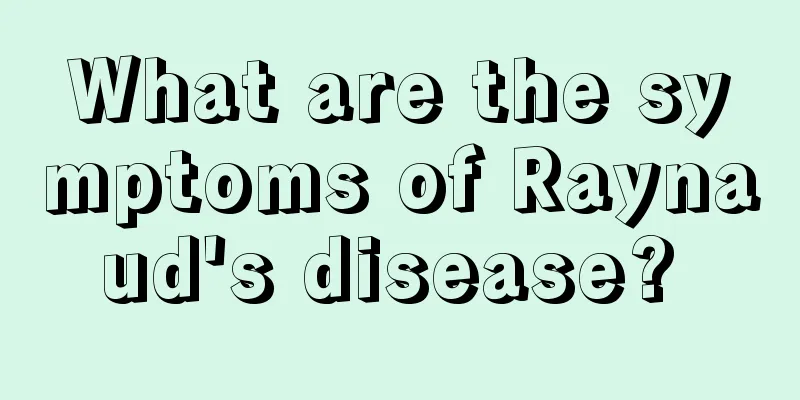How to effectively prevent and treat early dumping syndrome?

|
Many people do not understand dumping syndrome. In fact, it refers to a series of symptoms caused by gastrectomy and gastrointestinal anastomosis. Patients will show upper abdominal distension and pain, fullness, nausea, and sometimes accompanied by vomiting, belching, abdominal rumbling and flatulence. Attention must be paid to symptomatic treatment. 1. What should patients with “dumping syndrome” pay attention to in their diet? 1. Lie on your back for 15-30 minutes after a meal: This can reduce the discomfort caused by the effect of gravity on food entering the intestines too quickly or the excessive pressure of weight on the intestines. 2. Food should be mainly dry: Do not drink soup or beverages when eating. If you want to drink, you can drink liquid food about 1 hour after the meal. 3. Eat small meals frequently: Gradually adapt after the operation, eat less and more meals gradually, chew slowly, and avoid too much accumulation in the stomach at one time. 4. Adopt a low-carbohydrate, high-protein, moderate-fat diet, choose more cereal sugars, and avoid concentrated sweets and sweet drinks. 5. When hypoglycemia occurs, you should eat a small amount of food immediately. In the early stage of symptoms, adjust the food content and add some soft and thick foods. 2. How to prevent and treat dumping syndrome? 1. After gastrectomy or gastrointestinal anastomosis, patients should eat small meals frequently, eat more dry food and less soup, limit carbohydrates, especially sugar, and eat a high-protein, high-fat and low-carbohydrate diet. They need to lie down for about half an hour after meals. Develop the habit of drinking water between meals or on an empty stomach, take anticholine drugs (such as atropine, belladonna or propantheline, etc.) 20 to 30 minutes before meals to prevent excessive gastrointestinal motility, and take 0.5 to 1.0 g of tolbutamide (D860) orally to shorten the duration of hyperglycemia. 2. After the above treatment, those who have not yet developed the disease can be prevented from happening. In most mild and moderate cases, the symptoms can be alleviated or disappear within a few months or years. 3. Recently, some people advocate the use of α-glycoside hydrolase inhibitors and methoxy pectin to treat this syndrome. The former can inhibit the hydrolysis of disaccharides and polysaccharides, keeping sugars in a macromolecular state, thereby slowing down intestinal absorption and reducing its osmotic pressure, thereby slowing down the changes in blood sugar, blood volume and insulin levels and controlling symptoms; the latter achieves the purpose of treating this syndrome by changing the viscosity of food, reducing gastric muscle activity, and delaying gastric emptying. In addition, somatostatin and its isomers can inhibit the secretion of various gastrointestinal hormones such as glucagon, neurotensin and vasoactive intestinal polypeptide, and can also effectively control symptoms. |
<<: What tests are needed before amniocentesis?
>>: What to do if you suffer from sudden deafness? Treatment methods to know
Recommend
What to do if acne occurs due to excessive internal heat
More and more people are getting acne because of ...
What folk remedies are most effective in treating lung cancer? Several effective folk remedies for treating lung cancer
There are many symptoms of lung cancer. If lung c...
What are the TCM treatments for fibroids?
What are the TCM treatments for fibroids? Fibroid...
Where are the vocal cords?
Speaking is how we communicate, and the vocal cor...
How long can breast milk be stored
It is also important to store excess breast milk ...
What are the principles of TCM treatment of esophageal cancer?
In recent years, esophageal cancer has become one...
Normal range of elbow joint motion
Our arms are very flexible, and their main functi...
Cure rate of advanced ovarian cancer
Ovarian cancer is a disease with a very high mort...
What to do if chicken lays soft preserved eggs
Soft-shelled eggs are often found in chicken farm...
2 delicious soups for treating pancreatic cancer
Patients with early pancreatic cancer may have sy...
Tell you about the early symptoms of cardia cancer
What is cardia cancer? What are the symptoms of c...
The younger you smoke, the more likely you are to get bladder cancer. To prevent bladder cancer, you need to quit smoking immediately
Bladder cancer is the most common tumor in the ur...
Can rectal cancer in the middle and late stages be cured?
The occurrence of rectal cancer has seriously aff...
A woman only does it once a month, and she still looks like a flower fairy at the age of 40
For women, health care should be carried out at d...
What are the side effects of acupuncture therapy?
Acupuncture knife therapy is a treatment method b...









